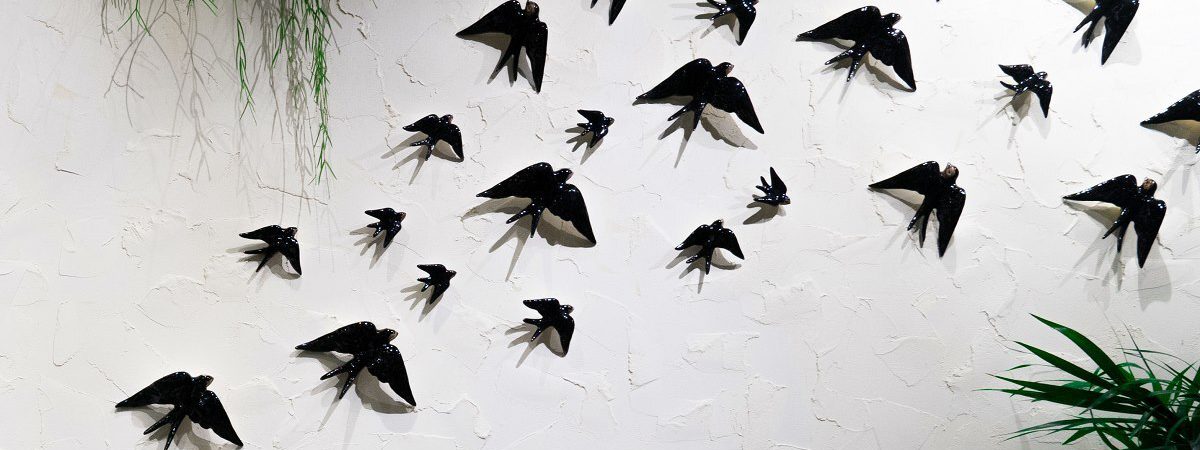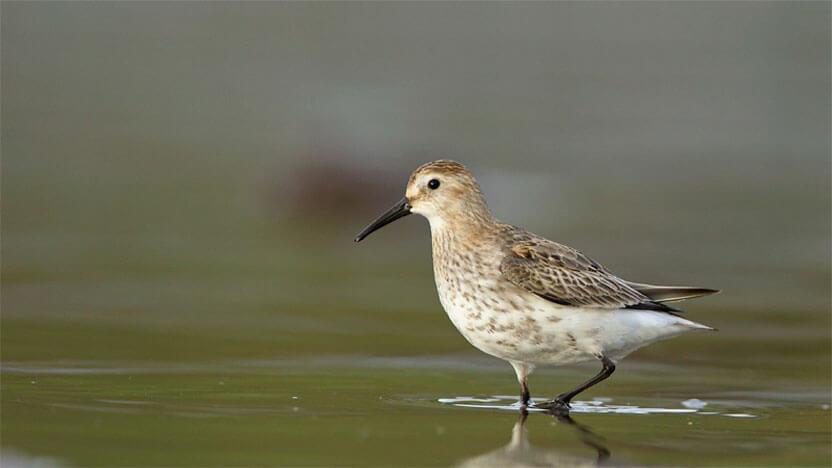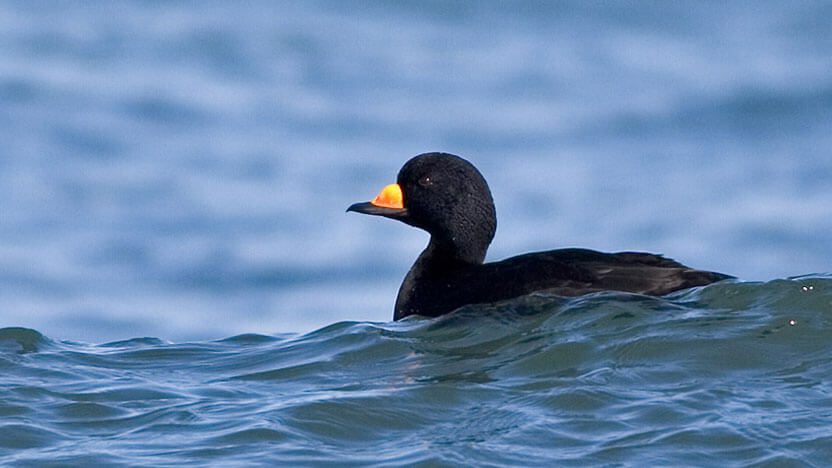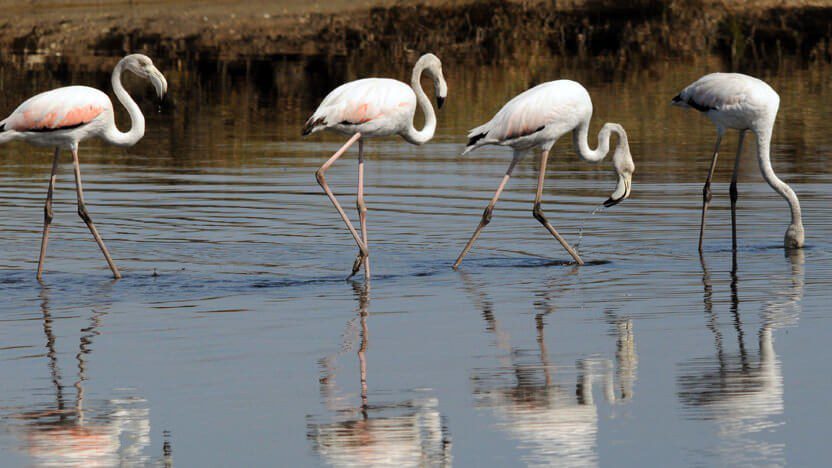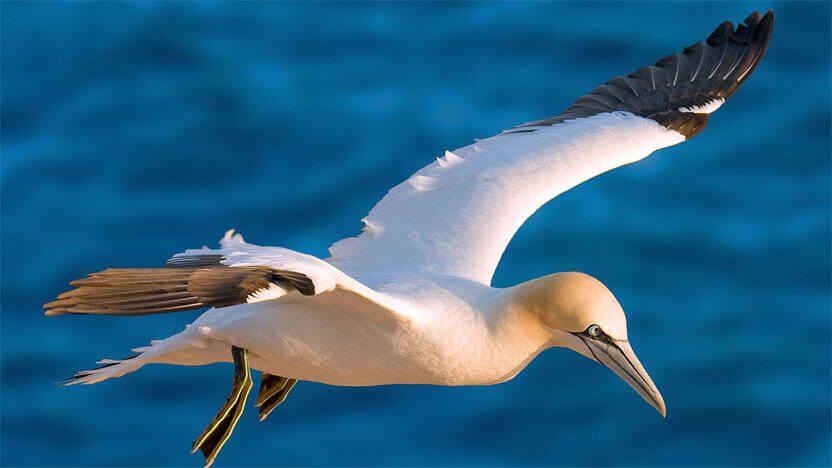From the Atlantic coastline to the inland near the border with Spain, there are thousands of amazing bird species to discover who fly around and across this region, spreading their colourful magic as far as the eye can reach!
Ria of Aveiro
The "Ria" of Aveiro is the ideal spot for birdwatching activities, as well as a privileged destination for birdwatchers worldwide due to the excellence of its natural habitats for protected species, such as the purple heron (Ardea purpurea). It's the greatest wet zone in the half north of Center of Portugal region and a paradise for birdwatching aficionados! Classified as Special Protected Zone, its salt-marshes and marine meadows are very important habitats for estuaries. The habitats are specially relevant for nesting of aquatic birds, mostly salt ponds, lagoon systems and dunes. There are several different spots for birdwatching.
The site holds 20.000 or more wintering waterbirds on a regular basis, with important congregations of sea-duck offshore (Melanitta nigra) and waders on the intertidal flats (notably the dunlin, Calidris alpina). The freshwater marshes and estuarine areas support important breeding numbers of several waterbirds. One of the most relevant ones is the Natural Reserve of S. Jacinto with important bird concentrations, mostly in Autumn and Winter time.
BioRia, a project developed and consolidated by the City Hall of Estarreja, offers several walking and cycling trails, revealing the highly rich natural heritage of the region. Perfect for birdwatching are the Special Protection Zones of Pateira de Fermentelos and Pateira de Frossos, considered wet zones of high biological richness. There are also the salt pond zones of Troncalhada, São Roque and Santiago da Fonte, as well as other areas of ornithological relevance, such as the estuary of Cáster river, Boco river and Lagoa do Paraíso.
Peniche
Peniche is without any doubt one of the world’s top destinations for surfers, offering the most incredible perfect waves! But what about birdwatching? Peniche is one of the best places in the world to watch seabirds. In 2014, 29.000 Northern gannets (Sula bassana) crossed Peniche, turning seabird passage into one of the most amazing natural shows!
Faia Brava Natural Reserve
Located in the Côa Valley, along the border of Guarda District, the Faia Brava Reserve covers about 850ha of land in the municipalities of Figueira de Castelo Rodrigo and Pinhel. In this sector, the steep slopes of the river are formed by granite outcroppings and cliffs, a good habitat for the cliff-breeding birds. This area is inserted in the Côa Valley Special Protected Area (Natura 2000) and IBA (Birdlife International Important Bird Area) and, finally, in the Archaeological Park of the Côa Valley, a UNESCO World Heritage Site.
In 2010 the Faia Brava Reserve was classified by the former Nature and Biodiversity Conservation Institute (ICNB) as the first private protected area of the country and is also currently a pilot area of the European project Rewilding Europe, for the creation of wild natural areas and for the development of nature tourism in Europe.
Côa Valley
Formerly known as Quinta de Santa Margarida, Paul de Toirões, 18 minutes away from the village Malhada Sorda, in Almeida, is the most recent area to be managed by Rewilding Portugal.
Once a mining operation, now ceased almost a decade ago, it has one of the largest areas of water in the entire Côa Valley, and unlike what happens in dams and reservoirs in the region, this water is distributed in a wide variety of environments such as ponds, channels, permanent and temporary ponds, interconnected by seasonally flooded wetlands and full of aquatic and riparian vegetation growing on the former mining areas of tungsten and aggregates.
Around all this water, a young but extensive forest occupies the flat ground, composed mainly of black oak, holm oak (Quercus rotundifolia), Pyrenean Oak (Quercus pyrenaica) and cypress. This area is already of great importance for biodiversity, with rich communities of aquatic flora and fauna, including the beautiful stripe-necked terrapin and the black stork, which regularly feed and take refuge here.
Natural Monument of Portas de Ródão
Classified Natural Monument in 2009, Portas da Ródão is a unique place with high geological value. Its steeps covered with heather, rosemary, broom and juniper are the place for threatened bird species, such as the Black stork, the Eagle owl, the Egyptian vulture, as well as a colony of Griffon vultures flying around this natural monument in the hottest hours of the day.
Natural Park of Tejo Internacional
The dazzling region of Tejo Internacional is the ideal place for birdwatchig, enclosing beautiful landscapes and a great diversity of habitats, from the river valleys, well preserved Mediterranean scrubland and cliffs to the holm oak forests and meadows where extensive agriculture and sheep herding were done for centuries. In this mosaic of habitats a great diversity of species can be found. Over 210 species of vertebrates have been recorded at this region, of which 140 are birds.
Natural Reserve of Paul do Boquilobo
Situated on the left bank of Tagus River, the Natural Reserve of Paul do Boquilobo follows a section of Almonda river born in the Mountain of Serra de Aire e Candeeiros that flows to the right bank of Tagus. The Portuguese Central St. Jame’s Way connecting Lisbon to Santiago de Compostela crosses the very heart of Natural Reserve of Paul do Boquilobo.
But if the grey heron (Ardea cinerea) is sedentary and the grey heron (Ardea cinerea) is one of the species that uses Paul mainly during the winter season, with the increase in temperature and the length of the day, large colonies of little egret (Egretta garzetta), cattle egret (Bubulcus ibis), and purple heron (Ardea purpurea) start to arrive.
